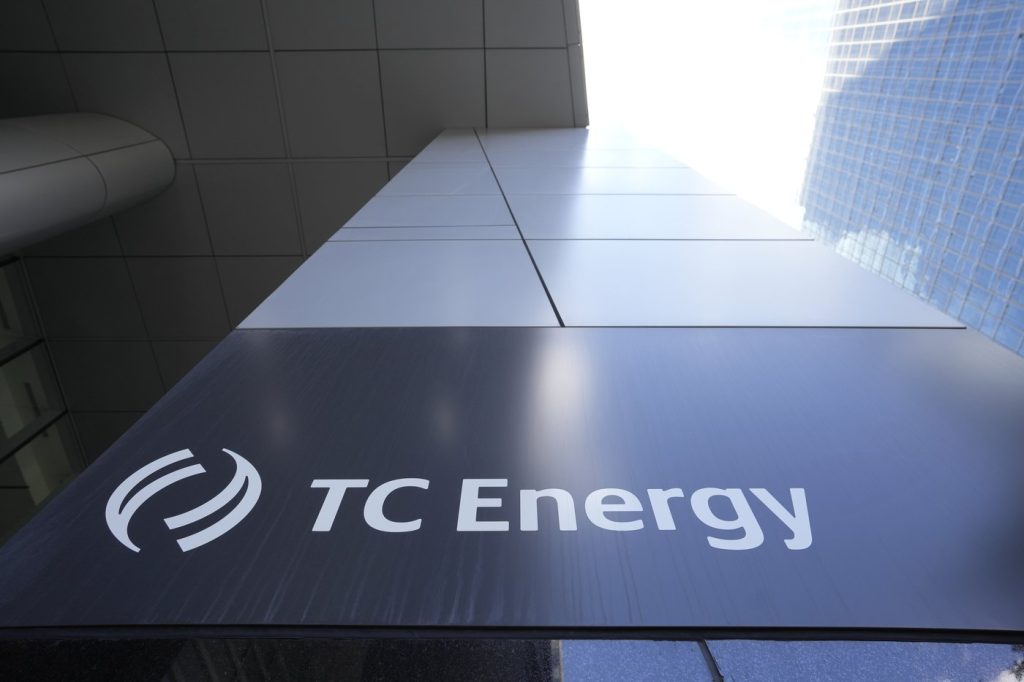TC Energy CEO sees opportunity in Trump win as company refocuses on natural gas

Posted Nov 19, 2024 11:12:09 AM.
Last Updated Nov 19, 2024 04:15:26 PM.
CALGARY — Donald Trump’s return to the White House is good news for Canada’s energy sector and an opportunity for TC Energy Corp., the CEO of the Calgary-based pipeline company said Tuesday.
François Poirier made the comments in a phone interview following TC Energy’s investor day presentation in Toronto. He said the former U.S. president’s re-election has been “top of mind” for the company, which has a network of natural gas pipelines in Canada, the U.S. and Mexico.
“He (Trump) is very focused on affordability. He understands the role that energy plays, and energy security, on the international stage,” Poirier said.
“Having the free flow of energy between the three countries in North America is very important. Natural gas and oil want to flow south, generally speaking. And having more supply of oil and gas from Canada will help contribute to lower prices in the U.S.”
As a company, TC Energy has already seen first-hand how business can flourish or be derailed by political winds south of the border.
Its Keystone XL project — a 1,900-kilometre proposed crude oil transportation pipeline that would have carried oil from the oilsands of northern Alberta to the major U.S. crude storage hub at Cushing, Okla. and then on to Gulf Coast refineries — was first proposed under the Obama administration, which rejected it on environmental grounds.
Keystone was then revived under the first Trump administration, before President Joe Biden killed it again by revoking the pipeline’s permit on his first day as president in 2021.
Last month, TC Energy completed the spinoff of its crude oil pipeline business into a new company called South Bow Corp., and as a result, TC is no longer the owner of the Keystone system.
South Bow “supports efforts to transport more Canadian crude oil to meet U.S. demand,” the company said in an emailed statement provided Tuesday by spokeswoman Katie Stavinoha.
“South Bow’s long-term strategy is to safely and efficiently grow our business,” the statement said.
But Poirier said the Alberta government has already reached out to TC in the wake of the U.S. presidential election, keen to see if that project could be revived or if there are other ways to increase Alberta’s oil and gas pipeline export volumes to the U.S.
Trump has proposed sweeping tariffs on all U.S. imports, but most experts believe Canadian oil and gas would be exempt from such a plan due to the highly integrated nature of the North American energy system. Trump has also been a vocal supporter of oil and gas generally, calling for more domestic drilling and tapping Liberty Energy CEO Chris Wright for secretary of the U.S. Department of Energy.
“We’ve had high-level conversations (with the Alberta government) around Keystone XL. We did mention that project is owned by South Bow … and for conversations around increasing the export of crude oil from Alberta, that would be for South Bow to consider,” Poirier said.
“Our conversations have been more around expanding access to U.S. markets for natural gas — both for export to international markets as well as into the U.S. markets, particularly in the northwest and the Midwest of the U.S. where Canadian natural gas has important market share.”
For TC Energy, a second Trump administration is timely because it coincides with what is already a renewed focus on natural gas for the company. The spin-off of South Bow was designed to enable TC Energy to pursue a natural gas-focused strategy at a time when the company sees growing demand for the commodity.
TC believes a combination of factors — including the phase-out of coal-fired power, increased exports of liquefied natural gas, growing electrification, and the rise of power-hungry data centres to fuel the AI revolution — will lead to a dramatic increase in natural gas usage in North America in years to come.
It predicts North American natural gas demand rising to a total of 160 billion cubic feet per day by 2035, an increase of 40 billion cubic feet per day from today’s levels. The company also believes natural gas and electricity will account for 75 per cent of total growth in overall North American energy consumption by 2035.
“We have seen this developing for quite a number of years … What I would say, however, is the degree of visibility that has developed over the last 12 months or so around data centres and around the importance of LNG exports has been more rapid,” Poirier said.
Approximately two-thirds of the 350 or so data centres currently proposed or under construction in North America are within 50 miles of TC Energy’s assets, Poirier said, meaning the company is uniquely poised to benefit from the AI boom by supplying much-needed natural gas infrastructure to the power-hungry industry.
While some hyperscale data centre operators south of the border have announced investments in nuclear or renewable power to reduce their emissions profile, Poirier said he is confident natural gas will play a major role in the industry’s growth.
“The issue with wind and solar is that on its own, you don’t have 100 per cent reliability because these data centres operate on a 24/7 basis,” he said.
“They consume energy on a 24/7 basis, which is why we’re so confident in the role that natural gas will play in empowering data centre growth.”
On Tuesday, TC Energy announced it has green-lit a total of about $1.5 billion in capital spending across four new projects, including two in the U.S. that will help with coal-to-gas conversion at two existing power plants as well as the sanctioning of a liquefied natural gas peaking project in southeast Virginia.
It also said its share of the capital required at an expansion at Bruce Power is about $175 million.
Poirier said the company is committed to remaining within its previously sanctioned $32 billion sanctioned capital growth program between now and 2027, but added the prospective opportunities related to natural gas right now are huge.
“We see probably twice the opportunity set that we can afford to spend our human and our financial capital on, based on all the opportunities in our footprint,” he said.
“Actually the skill that we’ve had to learn is how to say no, because we see so many good projects come across our desks.”
This report by The Canadian Press was first published Nov. 19, 2024.
Companies in this story: (TSX:TRP)
Amanda Stephenson, The Canadian Press








